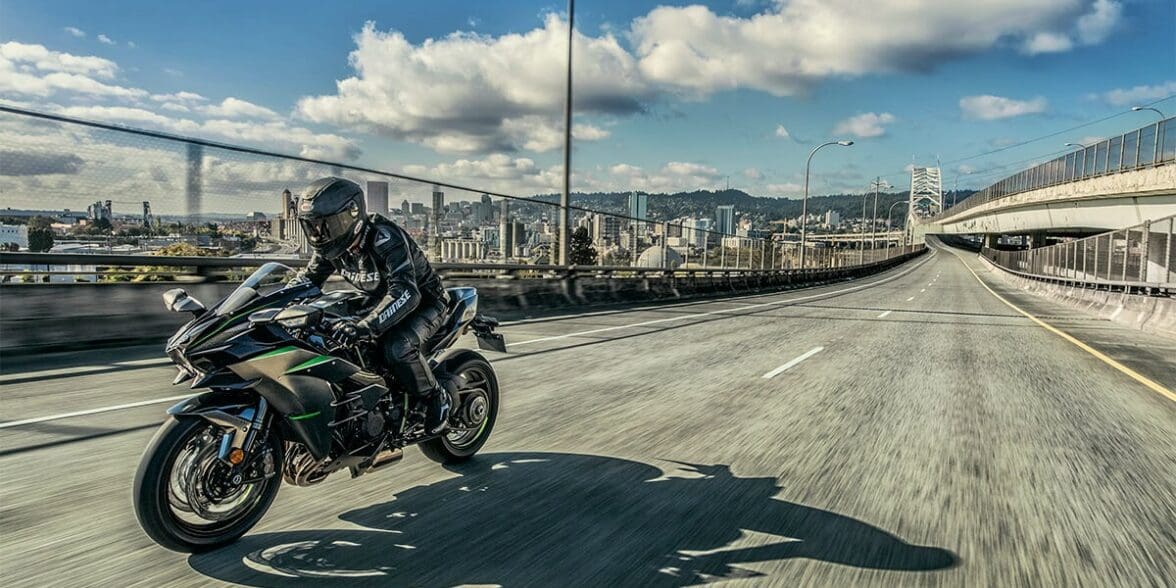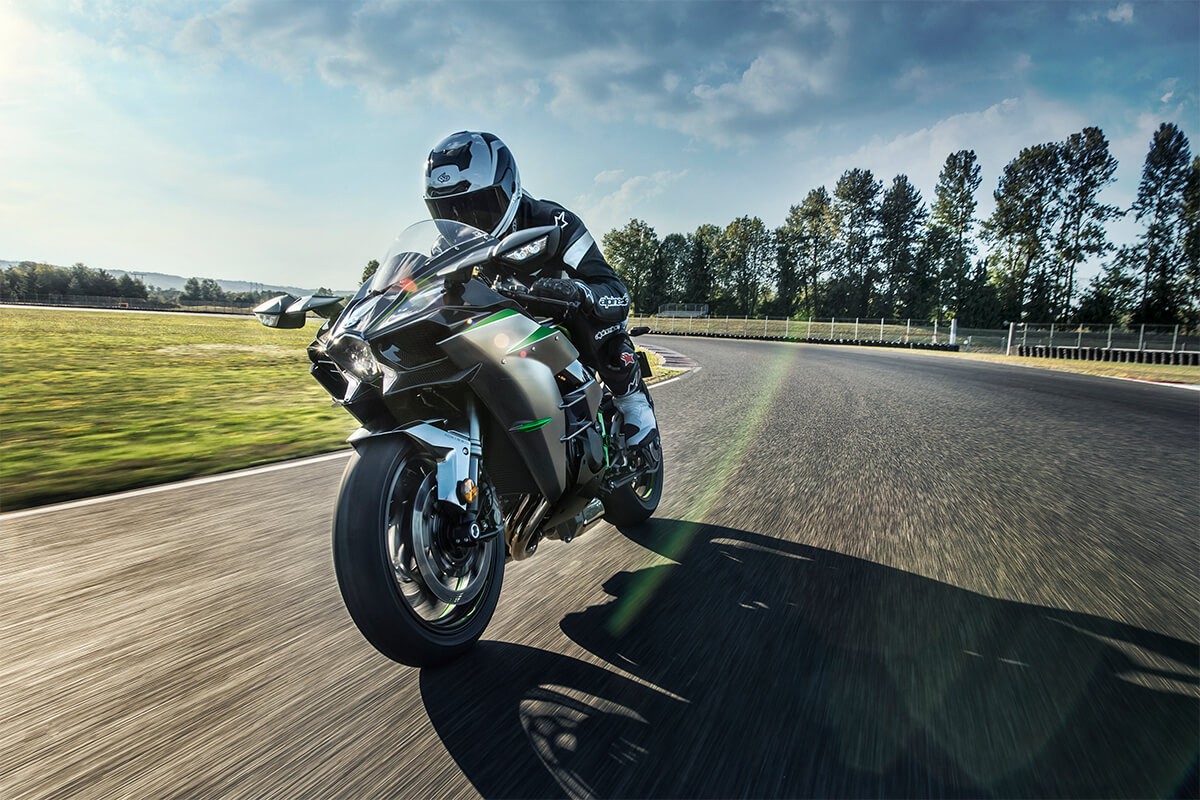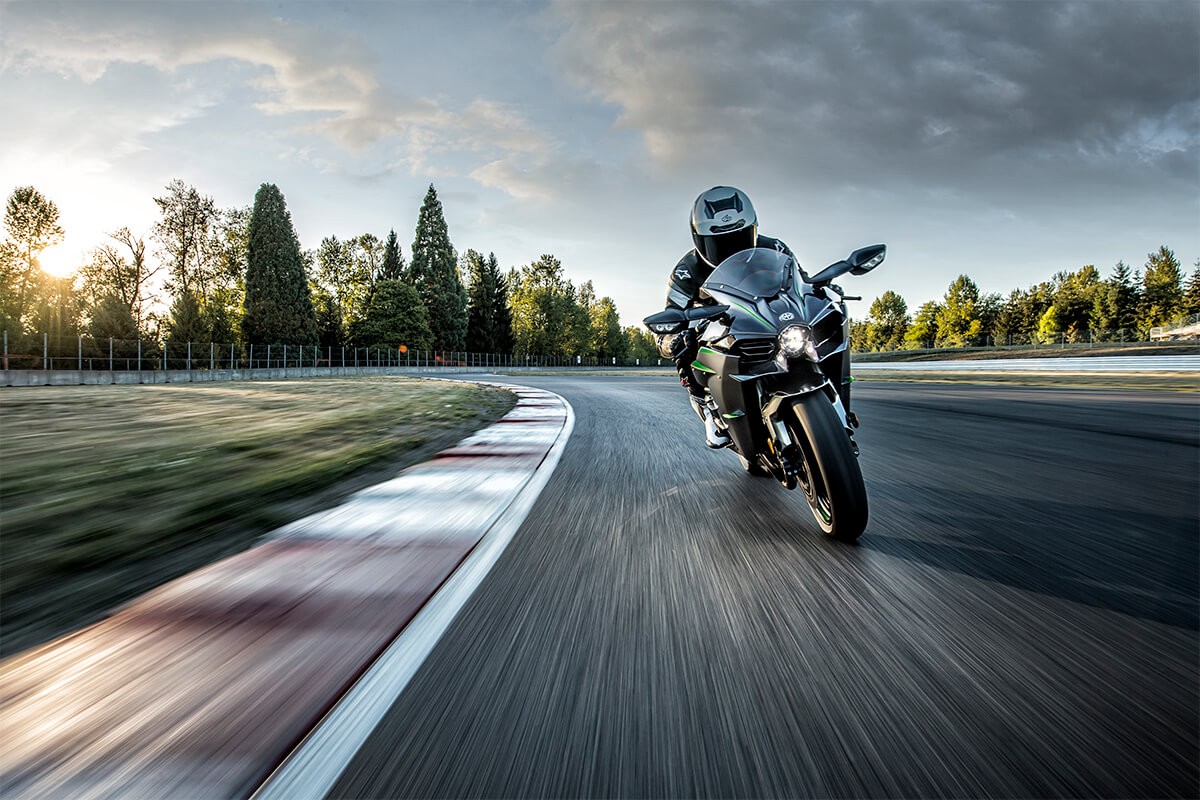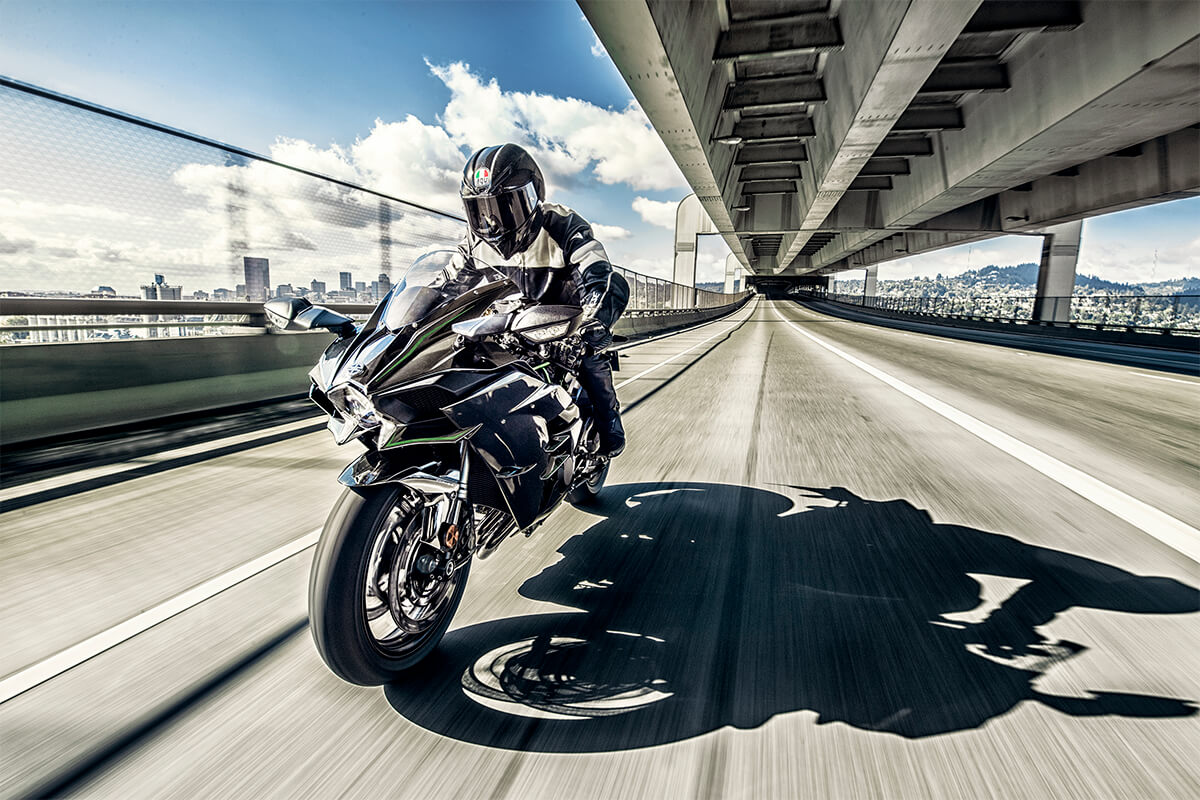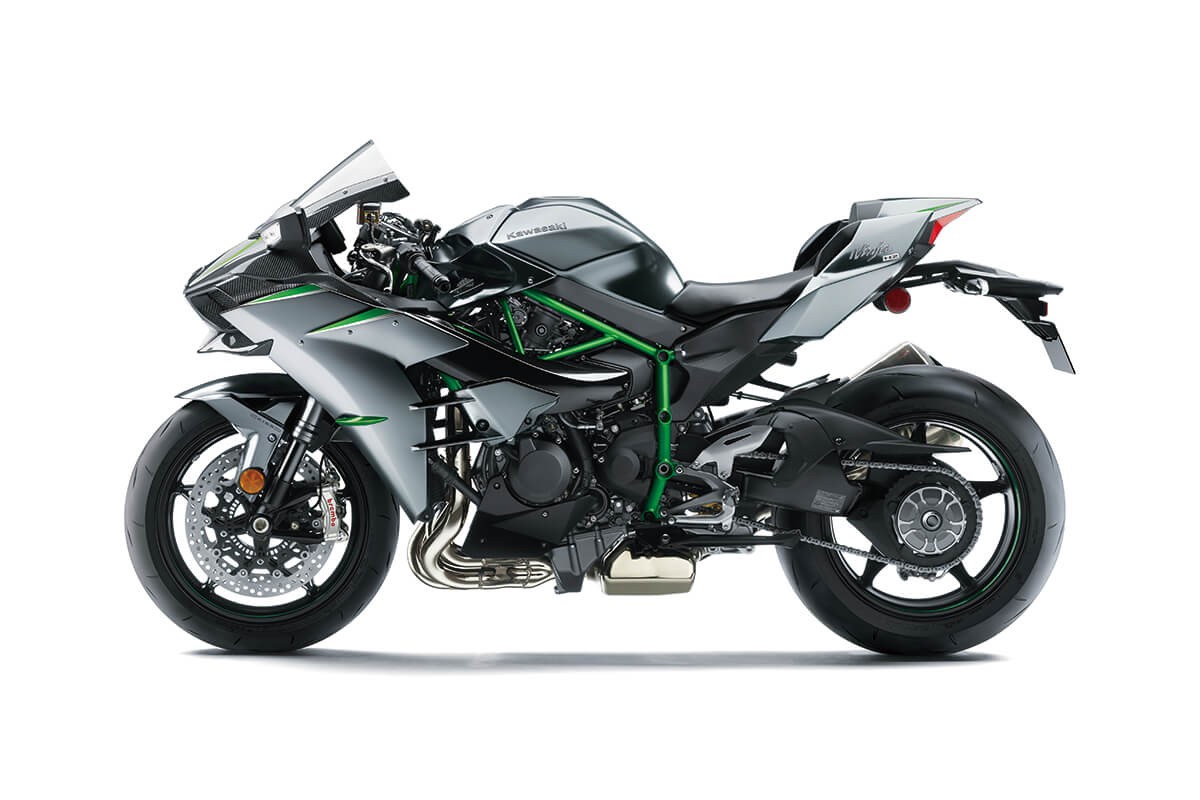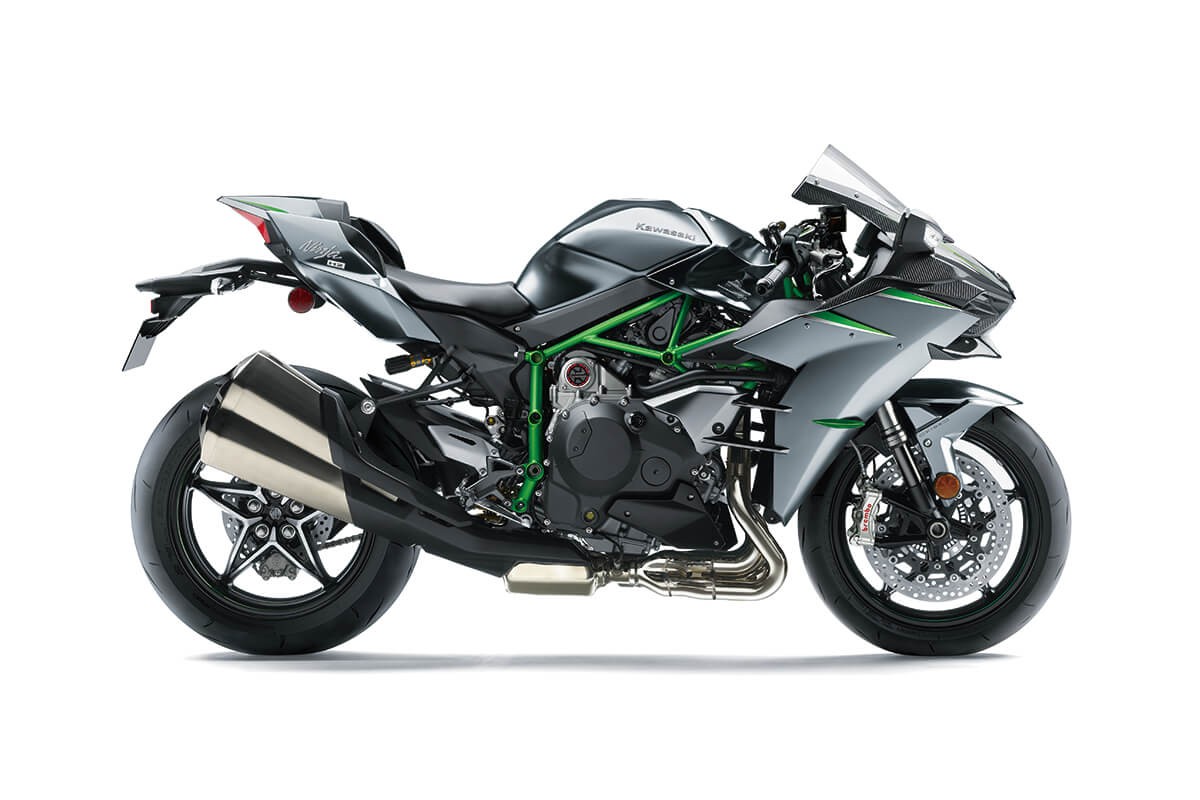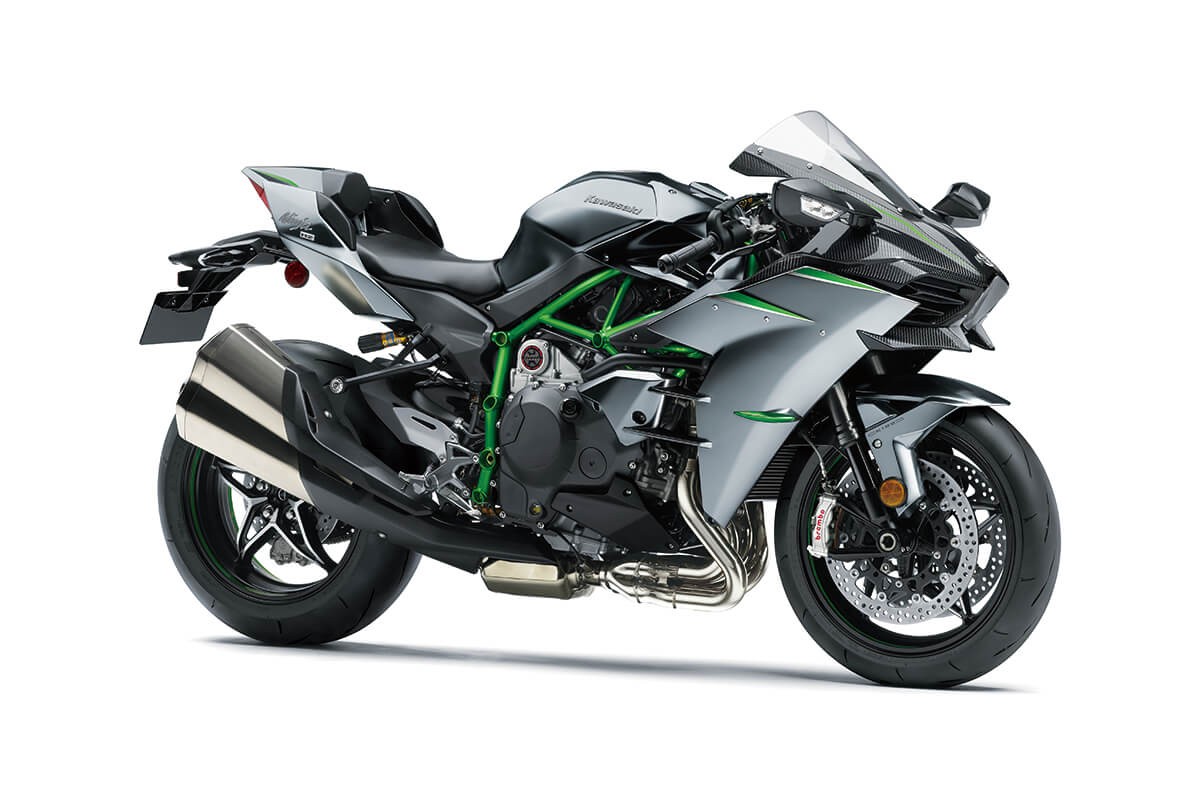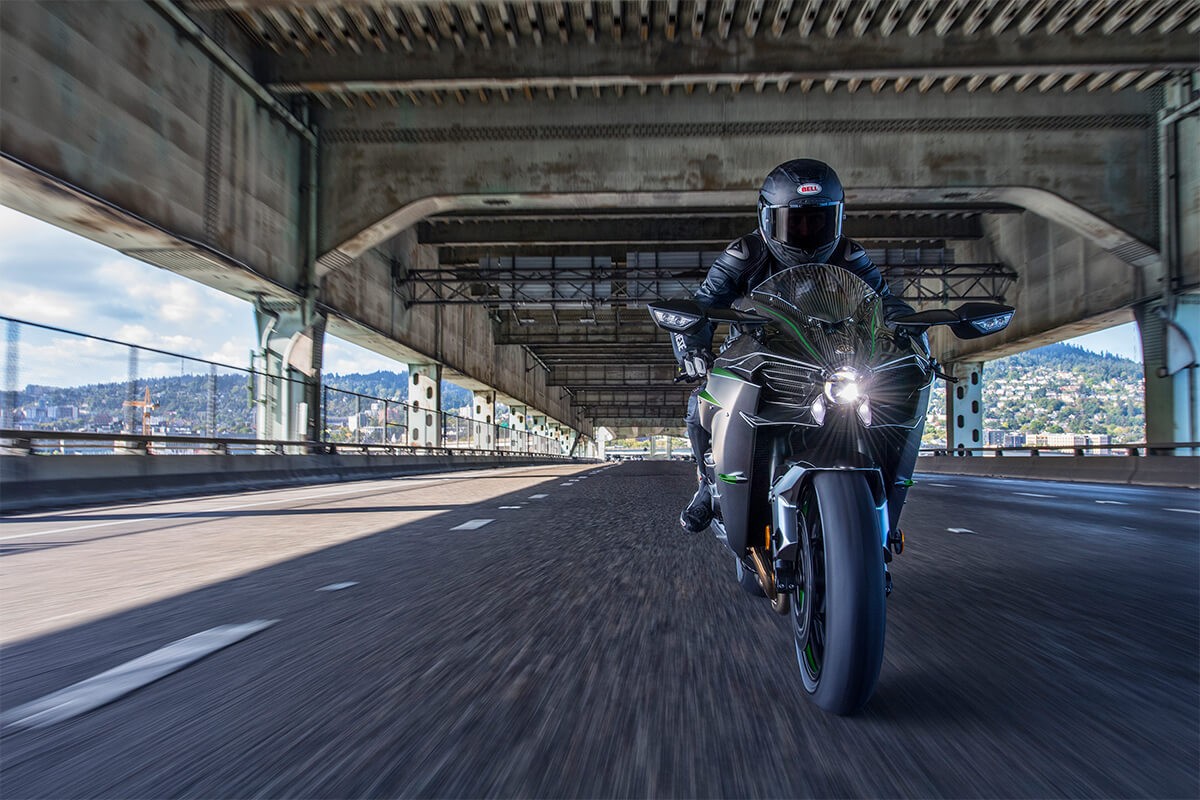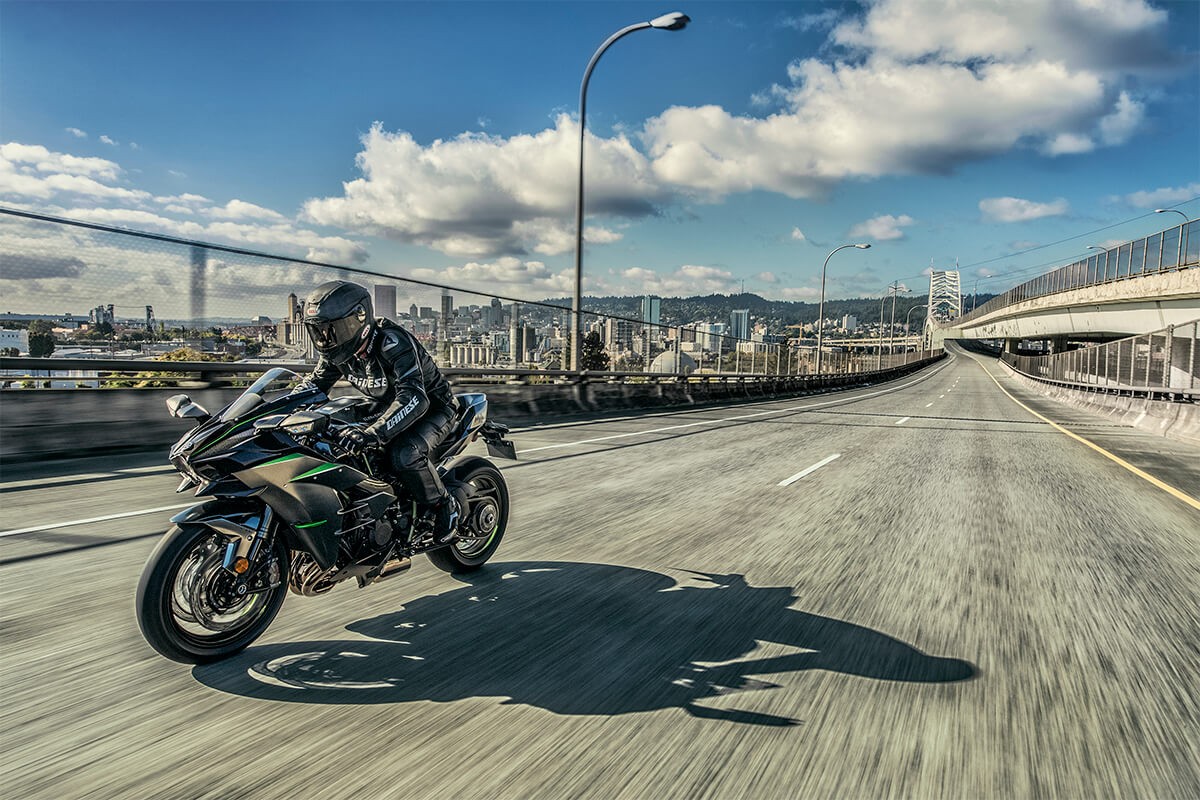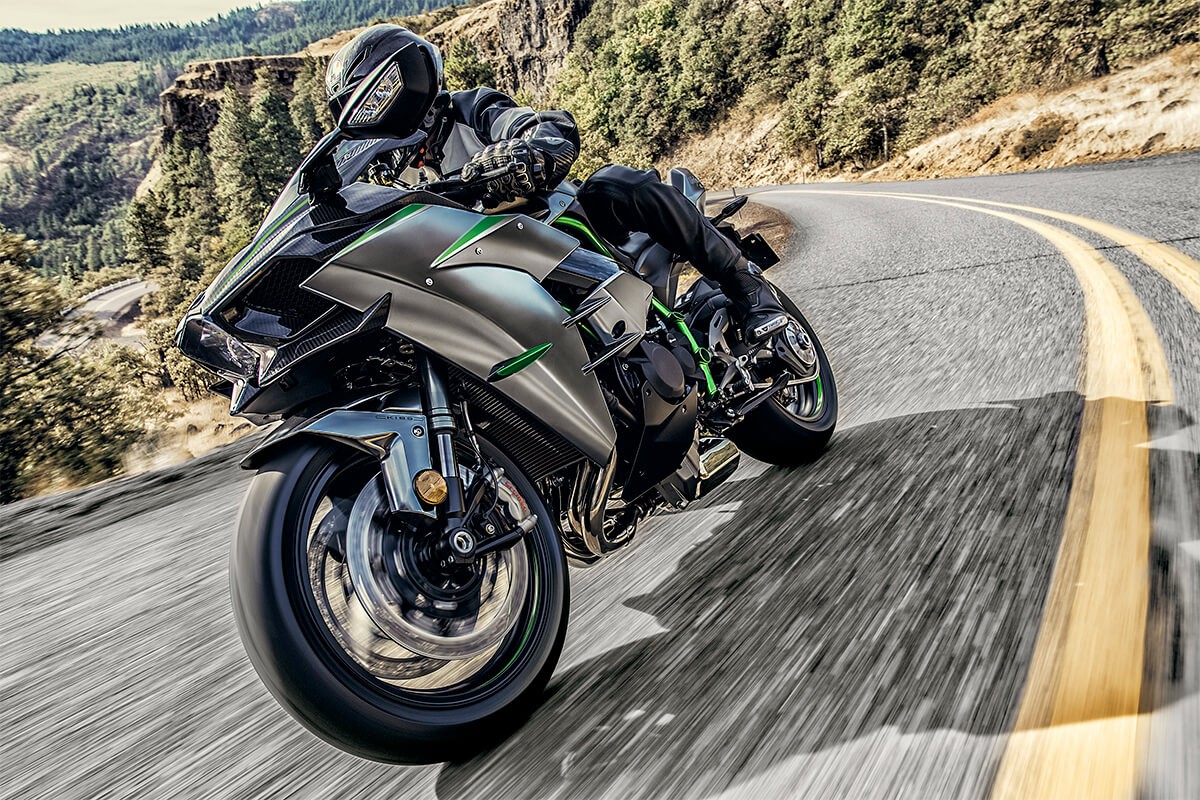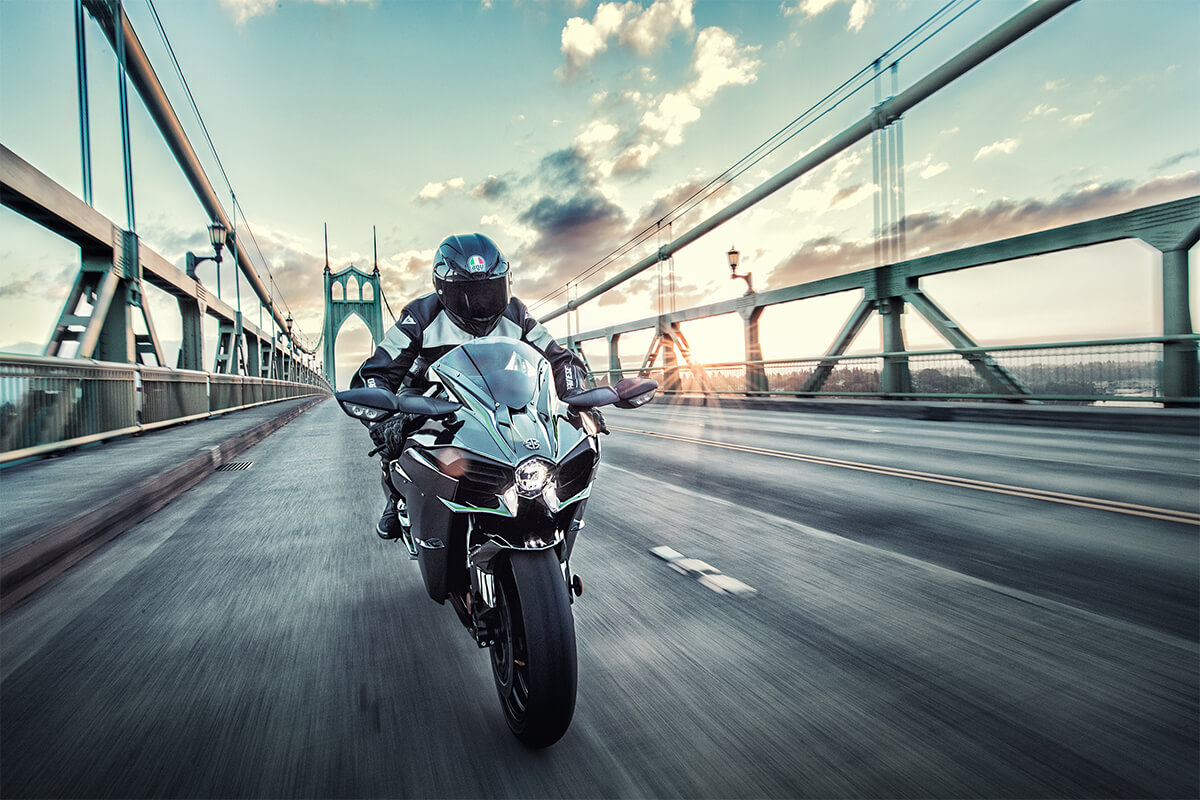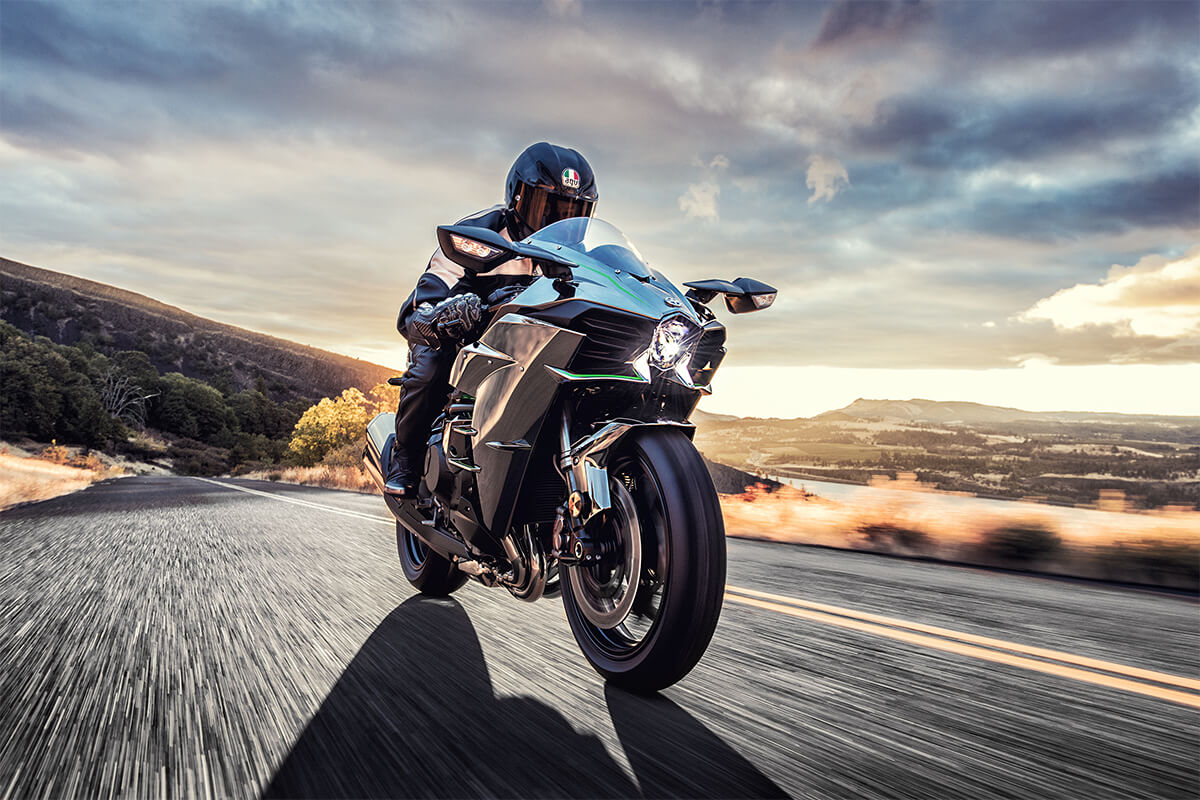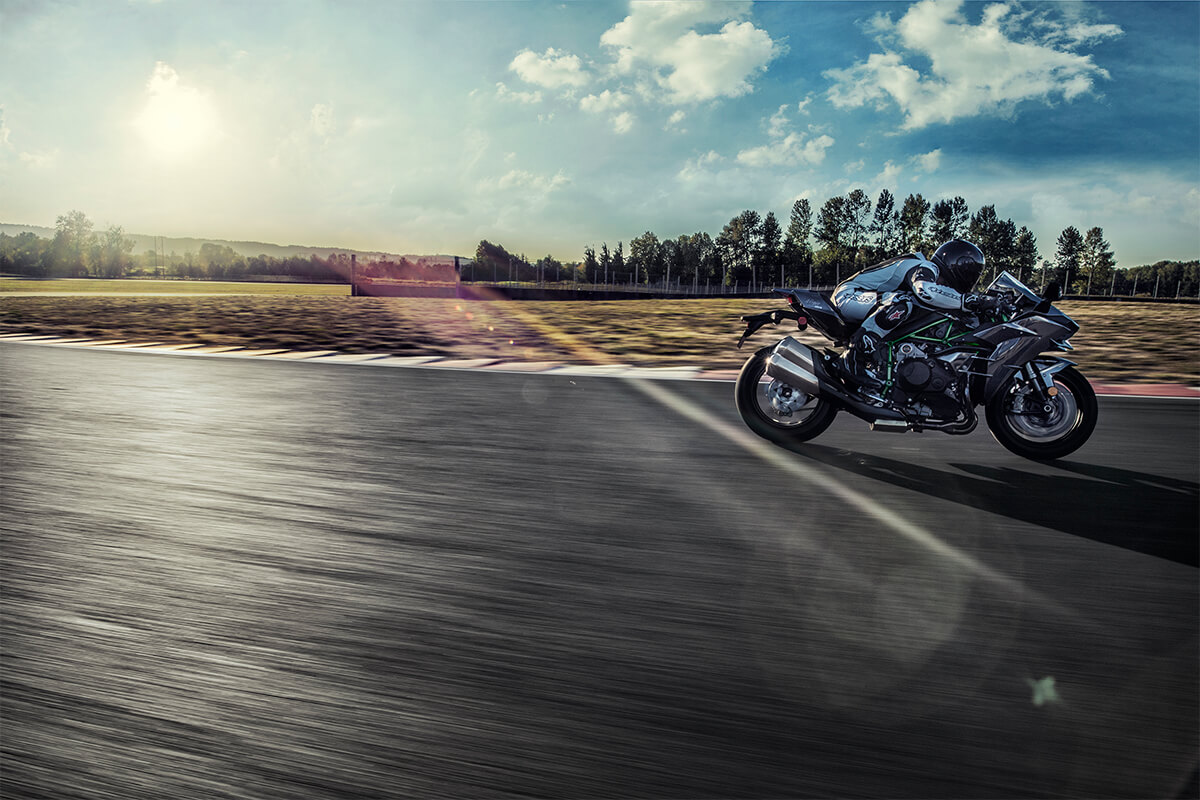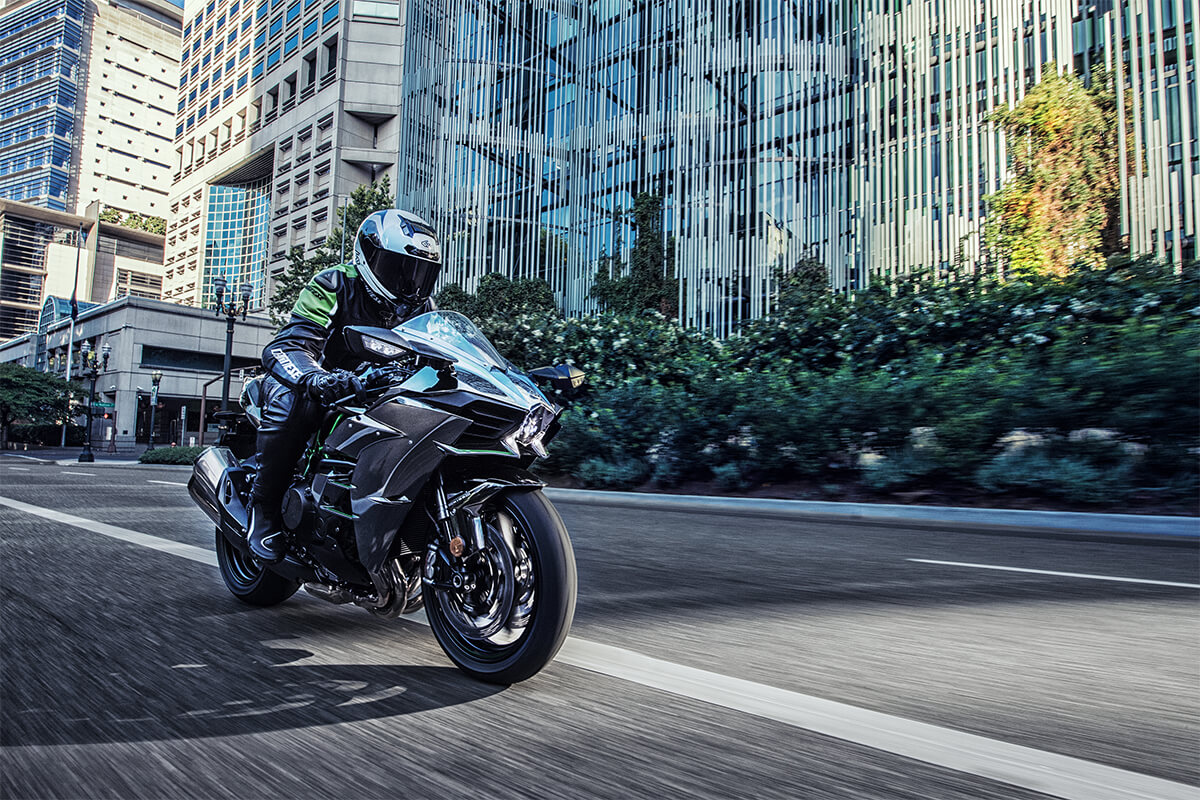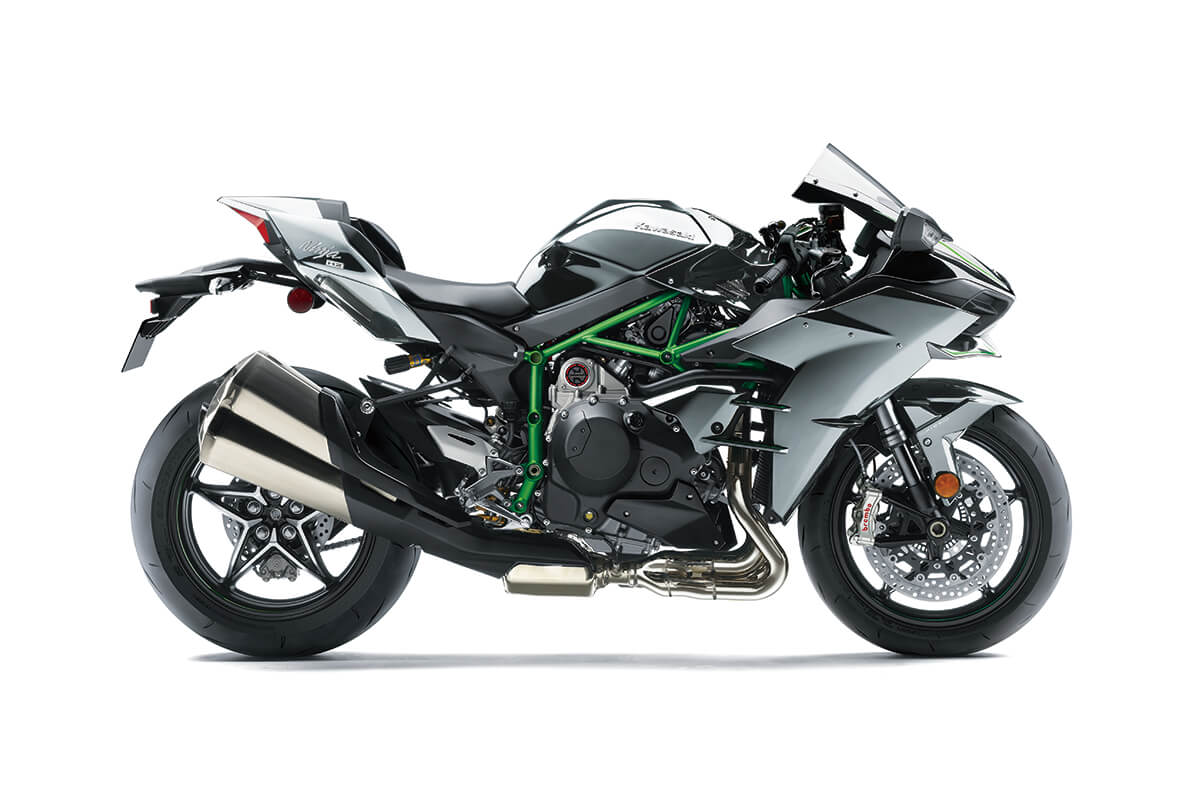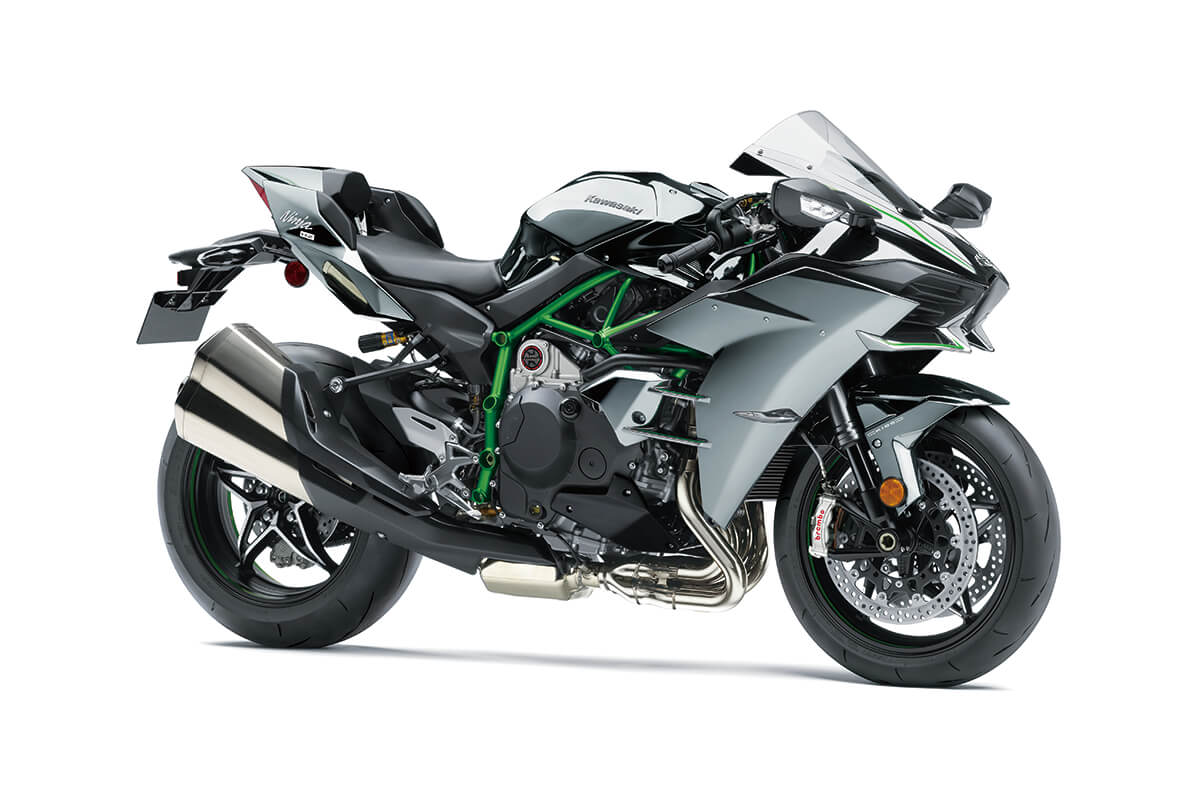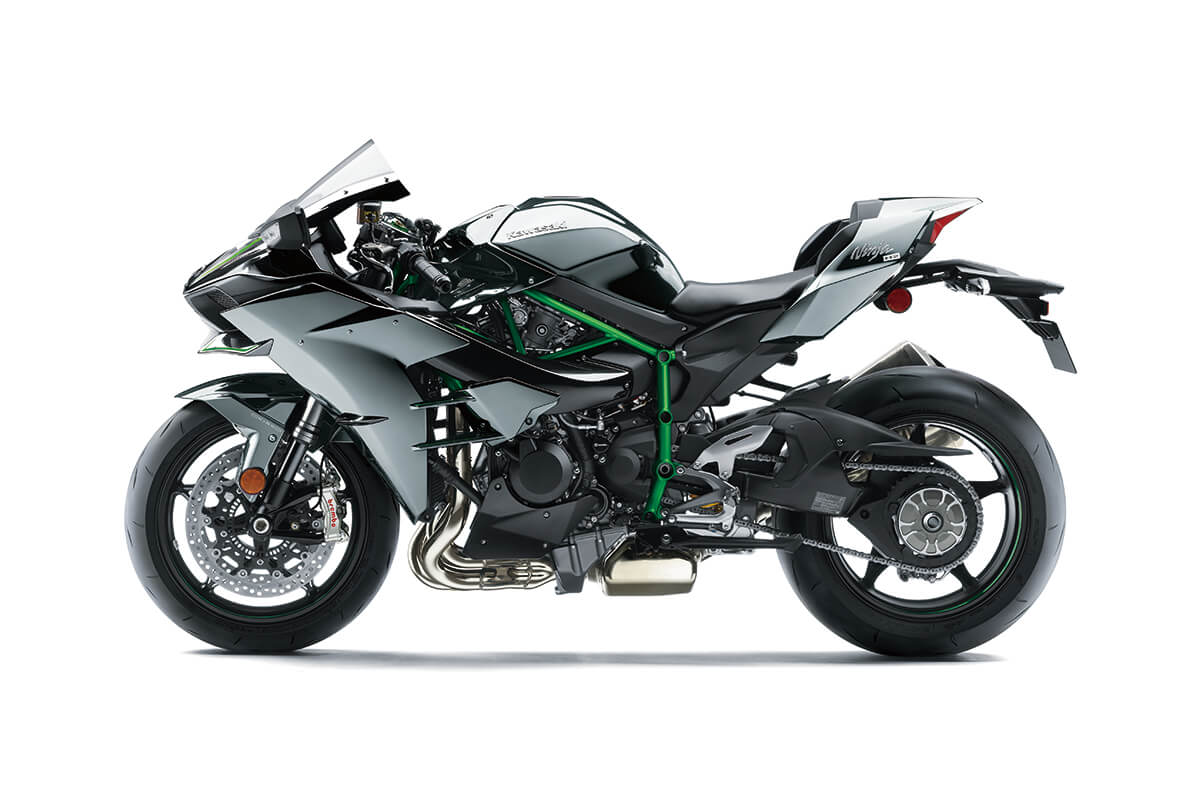The 2022 Kawasaki Ninja H2: Street-Legal Sport Touring Insanity
Contents
We’re assuming that the “H” in “Kawasaki Ninja H2” stands for “horsepower”—and that the “2” stands for “way 2 much”. Some of our writers at wBW like to make the occasional lighthearted joke about sport bikers looking like Power Rangers, but I’ll never so much as smirk at anyone who rides one of these, because that person is guaranteed to be a certified badass. If there’s ever been a street-legal sport bike that puts the “power” in “power ranger”, this one is it.
Kawasaki makes some great entry level motorcycles—you’ll find bulletproof beginner-friendly offerings like the Ninja 400 and Vulcan 900 in the 2022 Kawasaki lineup—but this ain’t one of ‘em. No, the Ninja H2 and Ninja H2 Carbon each contain a 988cc liquid-cooled 4-stroke DOHC valve in-line four cylinder engine—which produces an eye-watering 228 horsepower @ 11500 RPM, and 104.9 lb-ft @ 11000 RPM of torque. That’s… insane, Kawasaki. That’s actually insane.
That shouldn’t be surprising, though—of all the big Japanese motorcycle brands, Kawasaki has a reputation for being perhaps the most over-the-top. You don’t get on this beast if you’re a new rider. In fact, unless you’re extremely confident in your riding ability, you probably shouldn’t get on at all. But for those with the skills (and the cash to pay the bills for this $30,500 USD bike), the Ninja H2 is quite simply one of the highest performing bikes you can legally ride on public roads.
The Ninja H2 is unchanged from last year, and the Carbon version doesn’t add any performance enhancements—just a carbon fiber upper cowl (which, we have to admit, looks pretty sweet). They’re the same as the 2021 versions, right down to the color options: the Ninja H2 comes in Mirror Coated Spark Black, and the Ninja H2 Carbon comes in Mirror Coated Matte Spark Black or Candy Flat Blazed Green.
The Ninja H2 starts at $30,500 USD / $33,000 CAD.
The Ninja H2 Carbon starts at $34,000 USD / $38,000 CAD.
On this page: we’ve curated specs, features, news, photos/videos, etc. so you can read up on the new 2022 Kawasaki H2 and H2 Carbon in one place.
Model Overview
General Info
- Price:
- Ninja H2: $30,500 USD / $33,000 CAD
- Ninja H2 Carbon: $34,000 USD / $38,000 CAD
- Key Features:
- Assist and slipper clutch
- Economical riding indicator
- Electronic throttle valves
- Kawasaki engine brake control
- KLCM (Kawasaki Launch Control Mode)
- KCMF (Kawasaki Corner Management Function)
- KTRC (Kawasaki Traction Control)
- Smartphone connectivity
- Supercharged engine
- KQS (Kawasaki Quick Shifter)
- KIBS (Kawasaki Intelligent Anti-lock Brake System)
- IMU-enhanced chassis orientation awareness
Main Specs
- Engine: 988cc liquid-cooled 4-stroke DOHC valve in-line four cylinder
- Power: 228 hp @ 11500 RPM
- Torque: 104.9 lb-ft @ 11000 RPM
- Wet Weight: 524.8 lbs (238.1 kg)
- Seat Height: 32.5 inches (825.5 mm) at lowest point
Competitors
2022 Kawasaki Ninja H2 Specifications
ENGINE |
||
| Engine | 998 cc Liquid -cooled, 4-stroke, In-Line Four, DOHC, 16-valve | |
| Power | 228 HP | |
| Bore x Stroke | 76.0 x 55.0mm | |
| Compression Ratio |
8.3:1
|
|
| Fuel System | DFI® with 50mm throttle bodies (4) with dual injection ; Kawasaki Supercharger | |
| Starter | Electric | |
| Lubrication | ||
DRIVETRAIN |
||
| Clutch | ||
| Transmission | 6-speed, return, dog-ring | |
| Final Drive | Sealed chain | |
CHASSIS |
||
| Suspension Front | 43mm inverted fork with adjustable rebound and compression damping, spring preload adjustability and top-out springs/4.7 in | |
| Suspension Rear | Uni-Trak®, Öhlins TTX36 gas charged shock with piggyback reservoir, 24-way compression and rebound damping and adjustability and hand-turn spring preload adjustability, and top-out spring/5.3 in | |
| Brakes Front | Dual radial-mount, opposed 4-piston Brembo Stylema® calipers, dual semi-floating 330mm discs, KIBS ABS | |
| Brakes Rear |
Opposed 2-piston calipers, single 250mm disc, KIBS ABS
|
|
| Tires Front | 120/70 ZR17 (58W) | |
| Tires Rear | 200/55 ZR17 (78W) | |
| Fuel Tank Capacity | 4.5 gal | |
| Color |
Mirror Coated Matte Spark Black
|
|
ELECTRICAL |
||
| Ignition | Digital | |
| Spark Plugs | ||
| Headlight | LED | |
| Tail Light | LED | |
DIMENSIONS |
||
| Overall Length | 82.1 in | |
| Overall Width | 30.3 in | |
| Overall Height | 44.3 in | |
| Wheelbase | 57.3 in | |
| Ground Clearance | 5.1 in | |
| Seat Height | 32.5 in | |
| Curb Weight | 524.8 lb* | |
WARRANTY |
||
| Warranty | 12 Months | |
| Kawasaki Protection Plus | 12, 24, or 36 months | |
2022 Kawasaki Ninja H2 Features
Assist & Slipper Clutch
Under normal operation, the assist cam functions as a self-servo mechanism, pulling the clutch hub and operating plate together to compress the clutch plates. This allows the total clutch spring load to be reduced, resulting in a lighter clutch lever feel when operating the clutch.
When excessive engine braking occurs – as a result of quick downshifts (or an accidental downshift) – the slipper cam comes into play, forcing the clutch hub and operating plate apart. This relieves pressure on the clutch plates to reduce back-torque and helps prevent the rear tire from hopping and skidding. This race-style function is particularly useful when sport or track riding.
Economical Riding Indicator
While effective vehicle speed and engine speed may vary by model, paying attention to conditions that cause the “ECO” mark to appear can help riders improve their fuel efficiency – a handy way to increase cruising range. Further, keeping fuel consumption low also helps minimize negative impact on the environment.
Electronic Throttle Valves
Electronic throttle valves also enable more precise control of electronic engine management systems like S-KTRC and KTRC, and allow the implementation of electronic systems like KLCM, Kawasaki Engine Brake Control, and Electronic Cruise Control.
Kawasaki Engine Brake Control
KLCM (Kawasaki Launch Control Mode)
KCMF (Kawasaki Cornering Management Function)
KTRC (Kawasaki Traction Control)
Less intrusive modes maintain optimum traction during cornering. Designed with sport riding in mind, they facilitate acceleration out of corners by maximizing forward drive from the rear wheel. And because Kawasaki’s sophisticated software bases its dynamic analysis on the chassis’ orientation relative to the track surface (rather than relative to a horizontal plane), it is able to take into account corner camber, gradient, etc., and adapt accordingly.
In the more intrusive modes (and for some models, in any mode), when excessive wheel spin is detected, engine output is reduced to allow grip to be regained, effectively enabling riders to negotiate both short, slippery patches (train tracks or manhole covers) and extended stretches of bad roads (wet pavement, cobblestone, gravel) with confidence.
Smartphone Connectivity
Supercharged Engine
One of the greatest benefits of designing the supercharger in-house and tailoring its design to match the engine’s characteristics was that engineers were able to achieve high-efficiency operation over a wide range of conditions – something that would not have been possible by simply dropping in or trying to adapt an aftermarket automotive supercharger.
The importance of high efficiency in a supercharger is that, as the air is compressed, power-robbing heat gain is minimal. And while many superchargers are able to offer high-efficiency operation in a very limited range of conditions, the Kawasaki supercharger offers high efficiency over a wide range of pressure ratios and flow rates – meaning over a wide range of engine speeds and vehicle speeds. This wide range of efficient operation (similar to having a wide power band) easily translates to strong acceleration. The supercharger’s high efficiency and minimal heat gain also meant that an intercooler was unnecessary, greatly saving weight and space, and enabling the engine’s compact design.
KQS (Kawasaki Quick Shifter)
ABS (Anti-lock Brake System)
2022 Kawasaki Ninja H2 Photos
2022 Kawasaki Ninja H2 Videos
First Ride on the Kawasaki Ninja H2!
The NEW 2022 KAWASAKI H2 IS RIDICULOUS (EICMA RECAP)
Links
Kawasaki Official Websites


